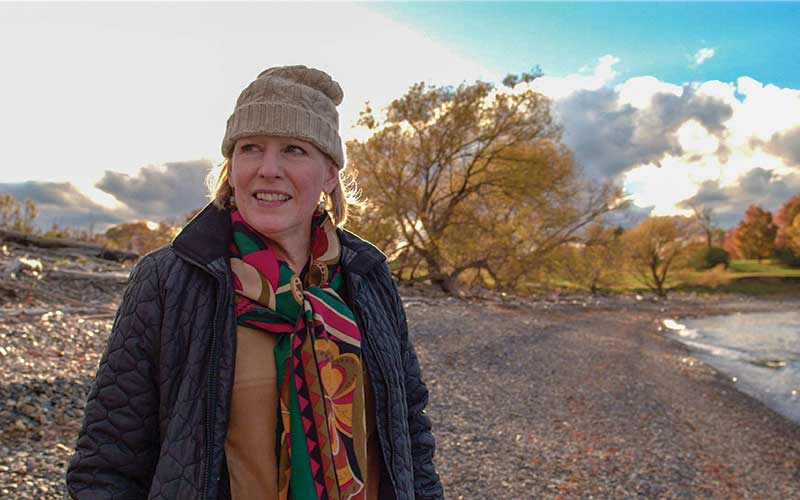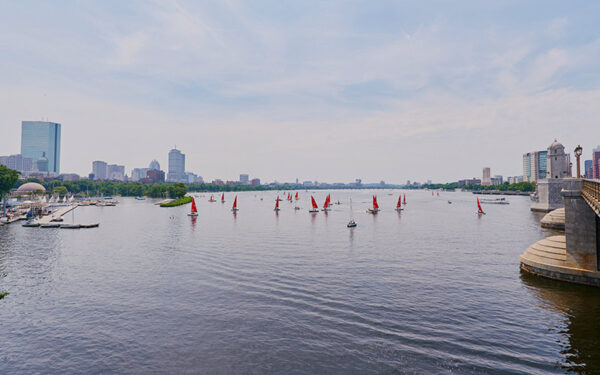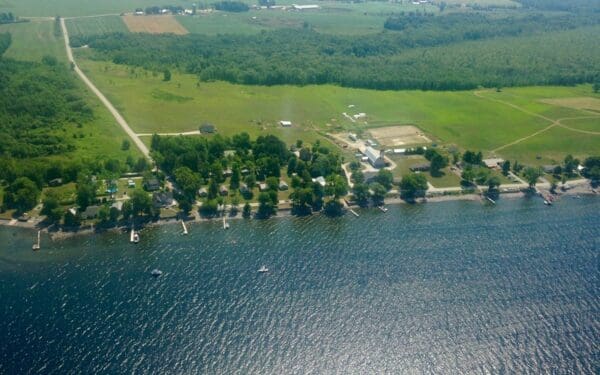
CLF Vermont Board chair Crea Lintilhac has lived on the shores of Lake Champlain for nearly 30 years and credits CLF for the recent spate of action to clean up the polluted waterbody.
Reasons for Hope after Decades of Degradation
When it comes to the future of Vermont’s Lake Champlain, Crea Lintilhac is optimistic. “We’re going to clean up our waters,” declares the long-time CLF Vermont Board member (and now chair), who has lived on the shores of the iconic lake for nearly 30 years. Given that she has witnessed the lake’s increasing degradation over three decades, one wouldn’t blame her if her outlook was a bit less rosy.
But Lintilhac has also witnessed a shift in the public’s – and the state government’s – attention to the lake in recent years, especially as blue-green algae bloomed on the lake’s surface more frequently. “People started to say, ‘I’m seeing these algal blooms; we’ve always had them but now it’s worse and it’s toxic. What’s happening to clean, fresh water?’” she recalls.
Lintilhac credits CLF for raising the public’s ire about the pollution issues plaguing Lake Champlain. In 2008, the organization sued the Environmental Protection Agency over unmitigated phosphorus pollution, which is produced when fertilizer runs off of farms and lawns and improperly treated sewage from septic systems leaks into the lake.
Too much phosphorus triggers the blue-green algae blooms, which literally suck the life out of waterways by absorbing the oxygen that plants, fish, and other wildlife need to live. Such pollution closes beaches, destroys habitats, and taints drinking water. The blooms also sicken people and pets, and developing research has linked them to serious neurological disorders including Lou Gehrig’s disease and Parkinson’s.
“CLF has helped people understand that they have a right to clean water,” says Lintilhac. “I have no doubt in my mind that this litigation gave the public the backbone to speak their outrage about polluted water that they can no longer swim or fish in.”
The successful settling of the lawsuit in 2011 has spurred a cascade of action. EPA established new pollution limits for the lake, and in 2015, then-Governor Peter Shumlin signed landmark legislation aimed at cleaning up the ailing lake. A year later, the state Secretary of Agriculture approved a much-needed plan negotiated by CLF to curb polluted runoff from agricultural operations. This year, newly elected Governor Phil Scott affirmed his own commitment to the clean-up, and the state legislature passed a $35.9 million funding measure to kick off the effort.
Much work still remains, however. The State Treasurer has estimated it will cost roughly $62.4 million per year for 20 years to meet Vermont’s legal obligations to restore Lake Champlain to health. But even with such a daunting price tag, the people of Vermont understand the price will be much higher if the pollution is left unchecked, says Lintilhac. Besides, she says, “It’s not about us alone; it’s about posterity. Vermonters want to deliver to the future a better environment and show future generations that we’ve done our due diligence.”



